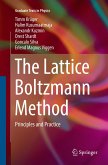Nature continuously presents a huge number of complex and multi-scale phenomena, which in many cases, involve the presence of one or more fluids flowing, merging and evolving around us. Since its appearance on the surface of Earth, Mankind has tried to exploit and tame fluids for their purposes, probably starting with Hero's machinery to open the doors of the Temple of Serapis in Alexandria to arrive to modern propulsion systems and actuators. Today we know that fluid mechanics lies at the basis of countless scientific and technical applications from the smallest physical scales (nanofluidics, bacterial motility, and diffusive flows in porous media), to the largest (from energy production in power plants to oceanography and meteorology). It is essential to deepen the understanding of fluid behaviour across scales for the progress of Mankind and for a more sustainable and efficient future. Since the very first years of the Third Millennium, the Lattice Boltzmann Method (LBM) has seen an exponential growth of applications, especially in the fields connected with the simulation of complex and soft matter flows. LBM, in fact, has shown a remarkable versatility in different fields of applications from nanoactive materials, free surface flows, and multiphase and reactive flows to the simulation of the processes inside engines and fluid machinery. LBM is based on an optimized formulation of Boltzmann's Kinetic Equation, which allows for the simulation of fluid particles, or rather quasi-particles, from a mesoscopic point of view thus allowing the inclusion of more fundamental physical interactions in respect to the standard schemes adopted with Navier-Stokes solvers, based on the continuum assumption. In this book, the authors present the most recent advances of the application of the LBM to complex flow phenomena of scientific and technical interest with particular focus on the multi-scale modeling of heterogeneous catalysis within nano-porous media and multiphase, multicomponent flows.
Bitte wählen Sie Ihr Anliegen aus.
Rechnungen
Retourenschein anfordern
Bestellstatus
Storno









